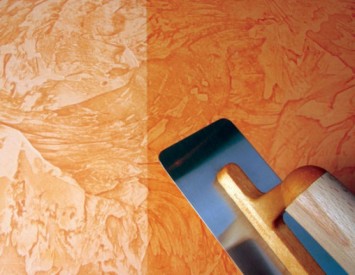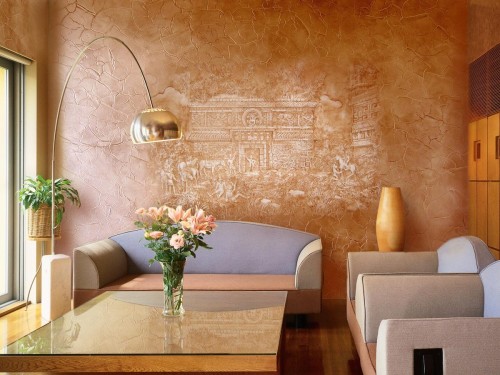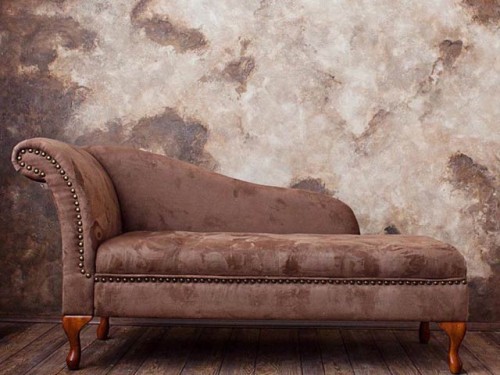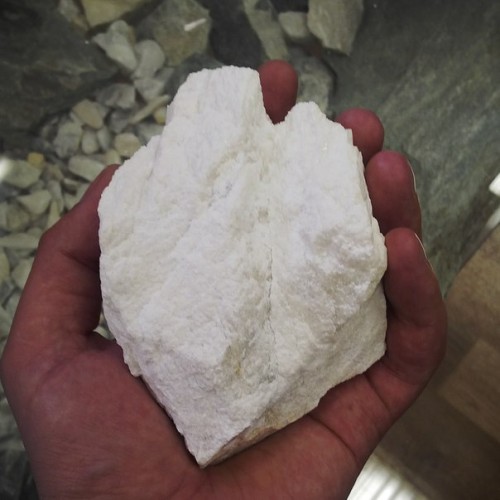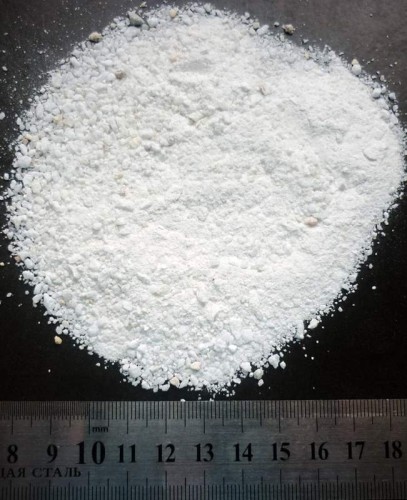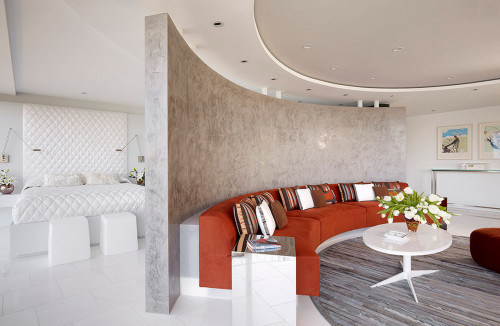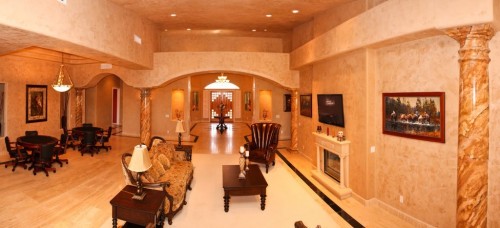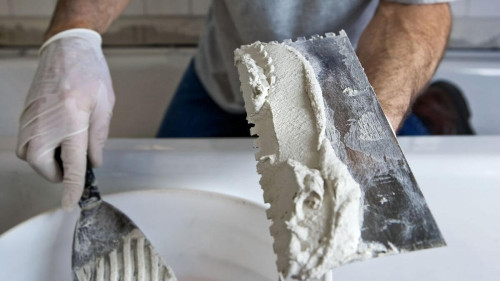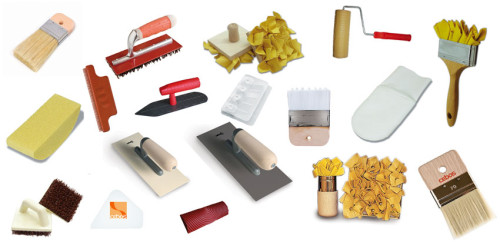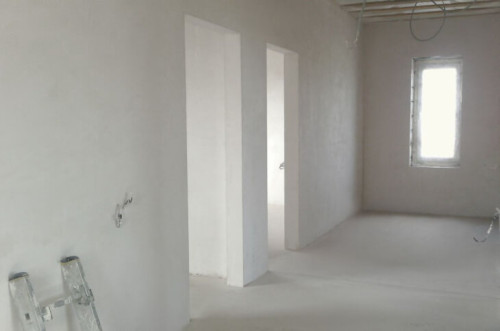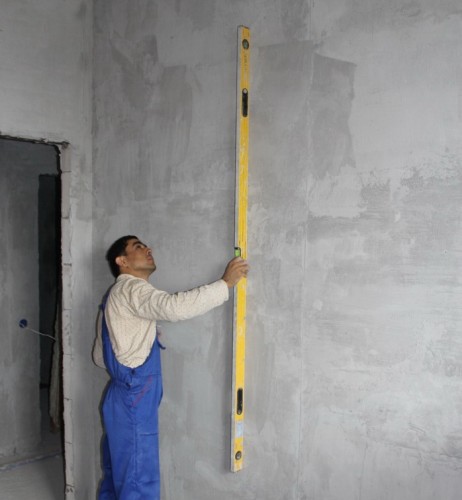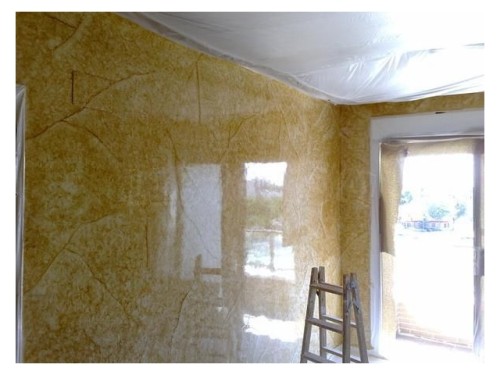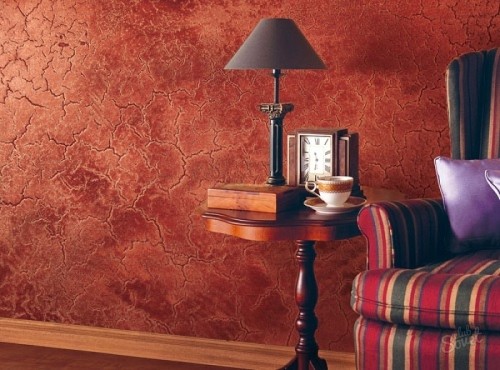When you have finished “dirty” work related to the arrangement of your own home, it is time to proceed with the final decoration of the room. There are a huge number of finishing materials on the modern market, with which you can decorate the room for every taste and manner. When it comes to decorative plaster mixtures, the first thing that comes to mind is the “Venetian”. This type of finishing material has a fairly deep roots, moreover, it is also significantly distinguished in the general range of decorative solutions. Venetian plaster will be a great option for solving the interior issue of the kitchen, living room or personal account. The technology of work with this plaster is quite complicated. If you study all aspects and features of this material, then you can apply the Venetian personally. Having done everything yourself, you will not only save money, but you can also feel like an artist of antiquity.
Characteristics of Venisian plaster
With the advent of new finishing materials, the production of decorative plasters reached a completely different level. A wide range of application of this material includes the application of the plaster coating both inside and outside the room. The facade, made using special equipment, will not only delight the eyes, but will also envy the neighbors. Before considering the work process, it is important to carefully understand all the main features and properties of this material.
The history of origin
It is generally accepted that Venetian plaster first appeared in ancient Rome. At that time, marble was universally used as finishing material. It took more effort to process it than now. In addition, in the end, there were many worked out material. To give a new life in marble baby, it was mixed with water and lime, after which it was applied to the wall. This universal plaster gives wide opportunities for fantasizing any topics you like. No wonder it is used in the arrangement of premises in the style of baroque, classicism, Gothic, art deco and other interior solutions.
The composition of the mixture
In order to better understand the technology of applying Venetian plaster with your own hands, it is necessary to study all the constituent elements of such a mixture well. The correctly selected “Venetian” will be an excellent stylistic solution for both a classic bathroom and a modern kitchen or living room.
As stipulated above, the main ingredients of the Venetian plaster are: marble flour, water and dry mix. In turn, the composition of the mixture can also be different, and are used using different application techniques. The main task of such a coating is to create the effect of marble. In addition, using the game of light of marble stone, due to the transparency of the crumb, you can achieve original color solutions.
To reduce the cost of decorative plaster, over time they began to replace natural material artificial. It is worth noting that artificial baby is practically no different from the real one. Skillfully completed work, will allow you to create a unique pattern on the wall, ceiling or facade of the house. Performing everything with your own hands, you can achieve the desired effect by decorating your favorite surface to your taste and according to an individual sketch.
Advantages of Venisian plaster
The main task of covering the Venetian is to decorate the room in order to create a comfortable interior. Such plaster is quite original, besides, it looks very interesting on the wall. When choosing this material as a decorative coating, first it is worth considering all its advantages and disadvantages.
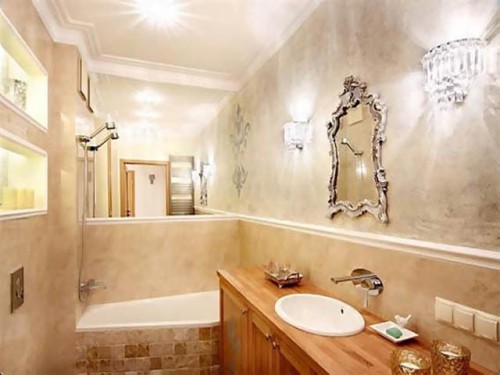
The main advantages of Venetian plaster include the following:
- strength (frozen solution is quite strong, due to use in the composition of reinforcing impurities);
- the long service life (the correctly applied coating should last at least 15 years);
- heat resistance ("Venetian" is not afraid of temperature differences);
- widespread use (the ability to use plaster both inside and out of the room);
- moisture resistance (can be used in the interior of the bath. The mixture contains hydrophobic wax, which protects the surface from moisture penetration);
- disguise (perfectly hides defects and irregularities of the coating);
- fire safety (Venetian plaster belongs to non -combustible materials);
- diversity (a wide selection of styles, textures, color solutions, as well as application methods allows you to achieve the highest accuracy of the work performed);
- the ability to repair or restore the coating.
As you can see, this finishing material has a lot. All of them urge to persuade their choice to use Venetian plaster. But it is worth considering that any material has its drawbacks, in our case, insignificant.
Disadvantages of Venisian plaster
Although the Venetian plaster has few disadvantages, they can play an important role when choosing a decorative coating. The main distinguishing feature is the high price of the product. But it is worth considering that you can always buy raw materials in a construction store, and make a plaster mixture with your own hand.
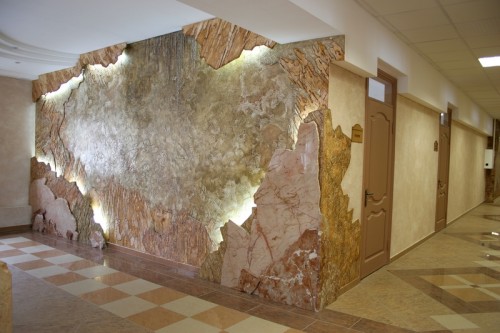
The second drawback is rightly included in the complexity of the technology of the application of the Venetian. Since the process is quite laborious and requires special skills, it is better to experiment a little, honing the technique. Before the finish application, it is better to practice a little, for example, on scraps of drywall sheet.
Creating a decorative coating
Before starting the finish surface of the surface of Venetian plaster, it is better to prepare correctly and thoroughly at first. Since the work will be performed with your own hand, such parameters as: the choice of the tool, the calculation of the required amount of material, preparing the base and applying the texture, are completely and completely on you.
Material consumption
Unlike other decorative mixtures, the calculation of the required amount of the Venetian plaster solution is quite simple, since it is applied to an already aligned, prepared surface. Basically, the consumption of the material is indicated on the bag or bank, but most often it turns out that it is not enough.
In order to calculate the consumables yourself, consider the following parameters:
- the thickness of the layer (manufacturers always indicate the maximum allowable thickness of the future coating);
- the number of layers (depending on the complexity of the pattern, as well as the thickness of each layer, the consumption changes significantly);
- the area of \u200b\u200bapplication (the larger this value, the greater the flow rate);
- the specified consumption (the manufacturer indicates the ratio of the weight of the solution per 1 m², when applying the plaster in a layer of 10 mm. Having calculated the required amount, it is better to take the “Venetian” with a margin).
The correctly calculated amount of the consumed solution will save you from additional investments related to the purchase of excess material. Correct calculations will save on the call of the master.
Tool
To apply Venetian plaster, at the same time achieve a quality result, it is important to choose the right tool. Using special devices, the work will go smoothly. This will save you from restoration measures related to poor -quality solution.
To decorate the interior "Venetian" use the following tool set:
- the spatula is large and small, two cells of different sizes, a grinding trout, a tank, a corner leveling;
- maclovice brush, fluttic brush, masking adhesive tape;
- roulette, level, pencil, rule;
- buckets, measuring glasses, mixer, syringe-suboser;
- gloves, glasses and other protective equipment.
The use of the right tool will help to accelerate and simplify decorative work without loss of the quality of the Venetian.
Preparation of walls
Before you start applying a decorative coating, you need to correctly prepare the base. The quality of the final drawing, as well as its service life, will depend on how work will be done at this stage.
To prepare the wall for the application of decorative material, come as follows:
- Process the base with concrete contact. This will increase the adhesion of the future coating.
- Put the plaster beacons to level the surface. In case of use on a hyspo -cardboard base, fill the joints with a sickle or non -woven tape.
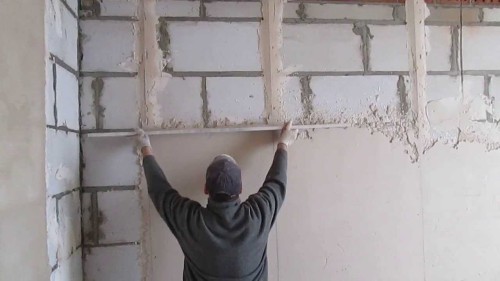
- Apply the primary layer of plaster and let it dry. Use the rule.
- Run the surface to get rid of gross fossils.
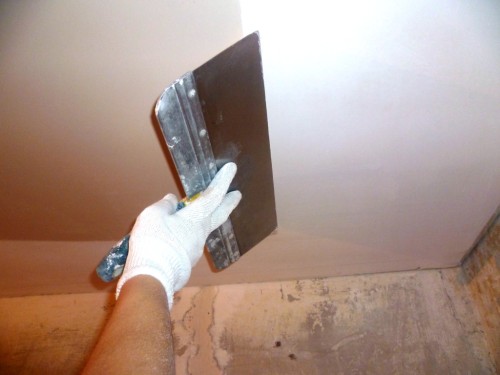
- Grind the surface again.
- Apply the finish layer. It is better to use the finished acrylic putty.
Pay special attention to this stage that Venetian plaster serves for a long time and pleases the eye. In order for the result to be a conscience, do all the work sequentially.
The technique of applying Venisian plaster
Starting to any finishing work, it is important to correctly and in stages to perform all the necessary actions. Each type of plaster coating implies a special type of solution. In case of working with Venetian, the technology is quite complex and requires increased attention. Focus on all the nuances and be patient.
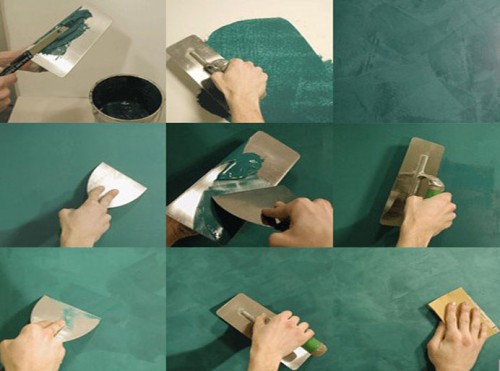
The technique of applying Venetian plaster includes the following stages:
- Application of the composition. In order for the first layer to be uneven, at the beginning of movement on the grater is pressed, in the end they are weakened by pressing.
- Alignment.
- Swimming. The heap must necessarily cross the joints of the parts of the picture.
- Polishing. Gives the surface a glossy look.
Keep in mind that if you could not achieve the necessary texture, everything can be corrected. To do this, apply the next layer of plaster on top of the failed. Remember that after 6 hours it will harden. For full hardening will take about a week. Experiment in small areas to identify your own application technique.
Application of Venetian plaster
Not everyone can do the "Venetian" well. The technique provides for many options for applying, as well as textures and other features that the master should feel with his own hands. If you are going to apply decorative plaster with your own hands, then we are advised to start a little on the other surface for a start. The remnants of drywall are well suited, which are preliminarily primed. Thus, you can sketch a few sketches to subsequently choose your favorite.
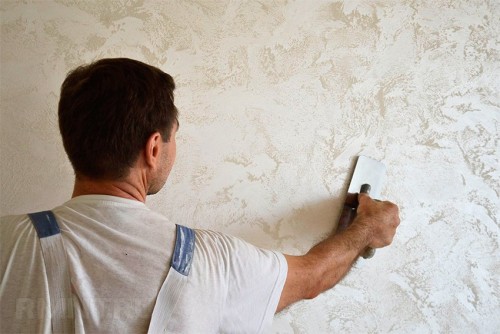
To apply the “Venetian” to the wall, use the following algorithm of actions:
- Apply a special facing putty on the prepared dry surface and let it dry. In order for the putty to finally harden, it must pass at least 6 hours.
- Mix the soil-painting with water in a ratio of 1: 7, and begin to apply to the surface, slightly pressing the roller.
- After the base is warmed, do the previous action again. Leave everything to dry for 5 hours.
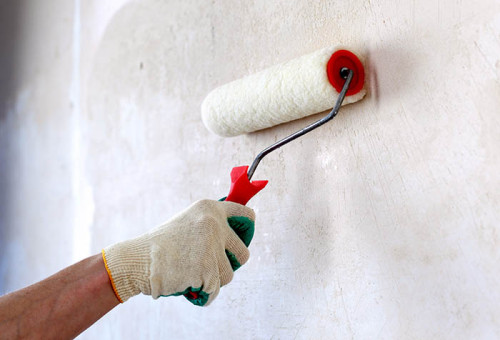
- Mix the plaster mixture for the "Venetian" thoroughly. For the best result, use a mixer.
- When the mixture has acquired a uniform in nature, begin to add a kner, if necessary. To achieve accuracy in proportions, use a measured cup and syringe. Mix the mixture thoroughly so that the dye is evenly distributed.
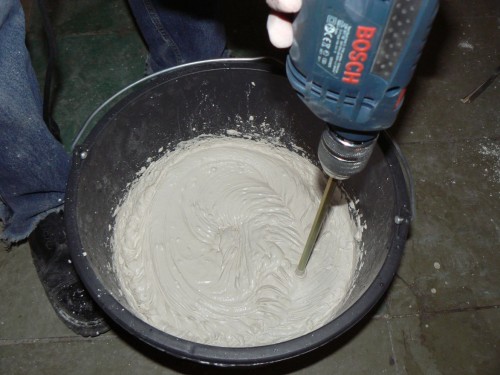
- Take a little solution with a small spatula, put on the grater and begin to smear along the wall. Move in an arc so that in the end you get smears the size of a grater. Keep in mind that after every 3-4 movements, the cell must be wiped with a damp cloth.
- The thick layer that appeared as a result of the first application, smoothed with smooth rectilineous movements. Keep the grater at a slight angle to level the surface.
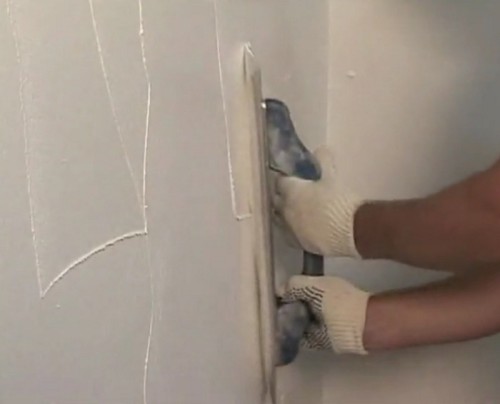
- Alternate all movements, first smearing the solution, and then smoothing the surface. Move gradually. Party 1 m² of surface, then the next and so on.
- Gradually increase the pressure of pressure on the cell. The angle of inclination gradually increase.
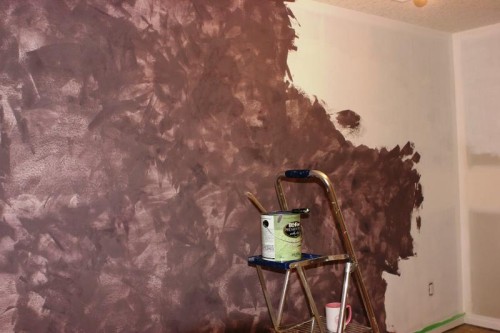
- Having plastered a separate site, let it survive for about 15 minutes.
- Using a large spatula, begin to smooth the solution from top to bottom, while the pressing force must be reduced so as not to damage the previous layer.
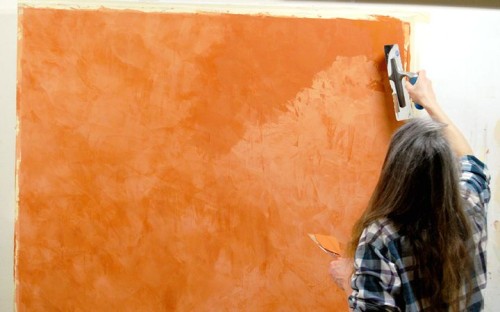
- After the surface has acquired a glossy look, arm yourself with a well -cleaned cell. Smooth the surface with a strong press. Keel Kelm at a slight angle. Smears should be slightly crossed.
- To apply plaster in hard -to -reach places, use a short cell and a small spatula.
- To apply the “Venetian” in the lower part of the wall, move the other way around - from the bottom up.
Before performing work with your own hands, be sure to practice on the other surface. This will help to identify your own technique and get a little catch. Always observe the sequence to achieve the best results.
To better understand the technology of applying decorative Venetian plaster with your own hands, we recommend watching the following video:
